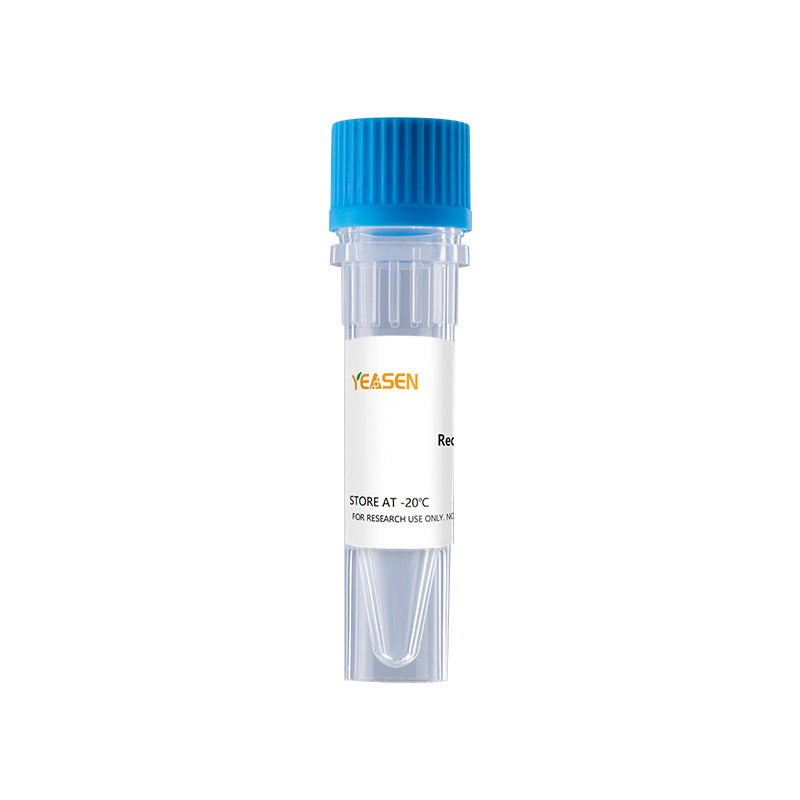Description
HVEM belongs to the TNF Receptor superfamily of transmembrane proteins, and plays a role in the activation of T-cells and other lymphocytes. It is expressed in various cells and tissues, including spleen, thymus, lung, macrophages, and T-cells. HVEM activation induces a signaling cascade that results in the induction of transcription factors NF-κB and AP-1. LIGHT (TNFSF14) and TNF-β (TNFSF1) function as the ligands for HVEM, which can also bind specifically to herpes simplex virus glycoprotein D. Soluble HVEM, which tends to form disulfide-linked heterodimeric complexes in solution, can act as a “receptor decoy” resulting in inhibition of the activity of the HVEM ligands, LIGHT and TNF-β. Recombinant Human HVEM-Fc Chimera is a 376 amino acid fusion protein that contains an N-terminal domain corresponding to the extracellular region of HVEM, and a C-terminal domain corresponding to residues 102 to 330 of human IgG1.
Product Properties
|
Synonyms |
|
|
Accession |
|
|
GeneID |
Pichia. Pastoris. |
|
Source |
E.coli-derived Human HVEM-Fc/TNFRSF14 protein,Leu39-Val202. |
|
Molecular Weight |
Approximately 58 kDa |
|
AA Sequence |
LPSCKEDEYP VGSECCPKCS PGYRVKEACG ELTGTVCEPC PPGTYIAHLN GLSKCLQCQM CDPAMGLRAS RNCSRTENAV CGCSPGHFCI VQDGDHCAAC RAYATSSPGQ RVQKGGTESQ DTLCQNCPPG TFSPNGTLEE CQHQTKCSWL VTKAGAGTSS SHWVEPKSSD KTHTCPPCPA PEFEGAPSVF LFPPKPKDTL MISRTPEVTC VVVDVSHEDP EVKFNWYVDG VEVHNAKTKP REEQYNSTYR VVSVLTVLHQ DWLNGKEYKC KVSNKALPTP IEKTISKAKG QPREPQVYTL PPSRDELTKN QVSLTCLVKG FYPSDIAVEW ESNGQPENNY KTTPPVLDSD GSFFLYSKLT VDKSRWQQGN VFSCSVMHEA LHNHYTQKSL SLSPGK |
|
Tag |
None |
|
Physical Appearance |
Sterile Filtered White lyophilized (freeze-dried) powder. |
|
Purity |
> 95 % by SDS-PAGE and HPLC analyses. |
|
Biological Activity |
Fully biologically active when compared to standard. The biologically active as determined by its ability to inhibit TNF-beta -mediated cytotoxicity using murine L929 cells. |
|
Endotoxin |
< 0.1 EU per 1μg of the protein by the LAL method. |
|
Formulation |
Lyophilized from a 0.2 µm filtered concentrated solution in PBS, pH7.4, with 3 % Trehalose. |
|
Reconstitution |
We recommend that this vial be briefly centrifuged prior to opening to bring the contents to the bottom. Reconstitute in sterile distilled water or aqueous buffer containing 0.1 % BSA to a concentration of 0.1-1.0 mg/mL. Stock solutions should be apportioned into working aliquots and stored at ≤ -20 °C. Further dilutions should be made in appropriate buffered solutions. |
Shipping and Storage
The products are shipped with ice pack and can be stored at -20℃ to -80℃ for 1 year.
Recommend to aliquot the protein into smaller quantities when first used and avoid repeated freeze-thaw cycles.
Cautions
1. Avoid repeated freeze-thaw cycles
2. For your safety and health, please wear lab coats and disposable gloves for operation.
3. For research use only.
Payment & Security
Your payment information is processed securely. We do not store credit card details nor have access to your credit card information.
Inquiry
You may also like
FAQ
The product is for research purposes only and is not intended for therapeutic or diagnostic use in humans or animals. Products and content are protected by patents, trademarks, and copyrights owned by Yeasen Biotechnology. Trademark symbols indicate the country of origin, not necessarily registration in all regions.
Certain applications may require additional third-party intellectual property rights.
Yeasen is dedicated to ethical science, believing our research should address critical questions while ensuring safety and ethical standards.

